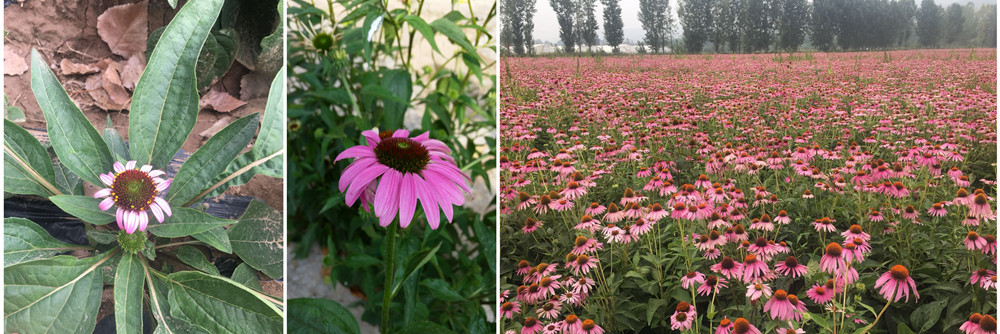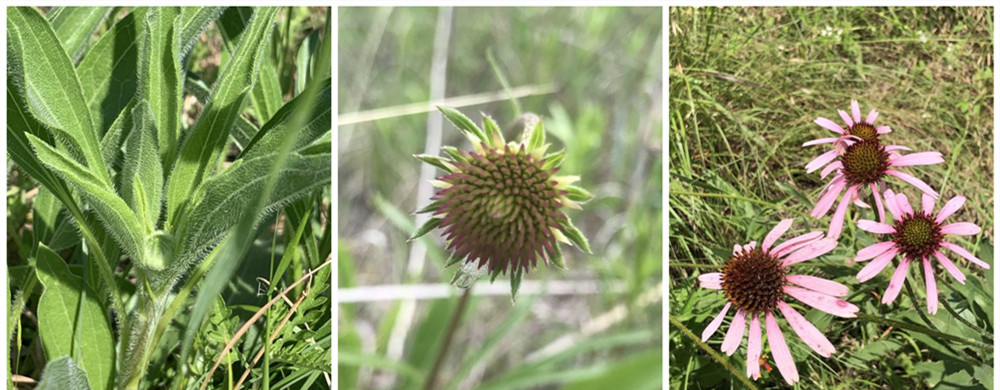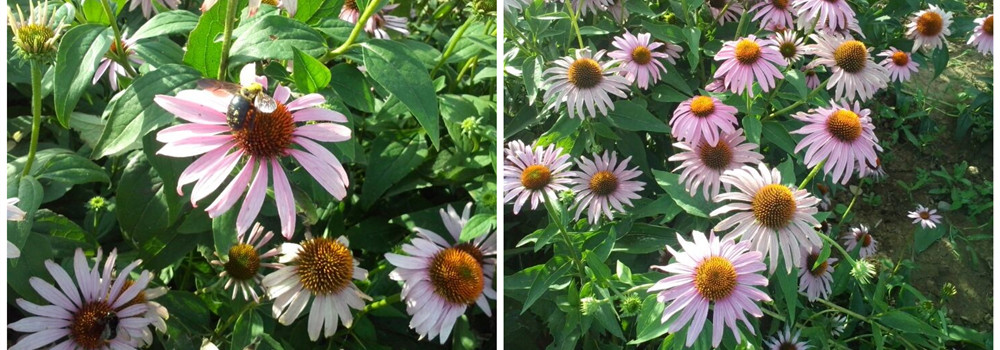Echinacea is the most popular herb belonging to the daisy family native to North America. Echinacea herb has a tall stem and a single flower, except that the echinacea flower is pale white, pink or purple, and the central cone is usually purplish brown. The cone is very large and actually the seed of echinacea. It has spikes that look like stiff combs or angry hedgehogs. That’s actually how echinacea gets its name: Echinos is for hedgehog in the Greek word. As an elegant perennial native to North America and southern Canada, it has 8 species and several varieties of this genus. At present, there are 3 varieties being developed as medicine uses: Echinacea purpurea, Echinacea augustifolia, and Echinacen pallida.
Did you know which kind of echinacea you should use? They have been extensively used against infections including clod & flu, urinary tract, throat, and ear. It is broadly available in pharmacies, health shops, and on online portals as liquid extracts, dried herb, teas, and in the form of capsules and pills, which is expected to augment the Echinacea market growth. You may have noticed that there is the same color for Echinacea purpurea, Echinacea augustifolia, and Echinacen pallida, how to distinguish them? Please follow us and read more.
They are similar in appearance and the flowers are collected together into single rounded heads at the ends of long peduncles. The alternate leaves are oval to lanceolate. The inflorescence is a capitulum, formed by a prominent domed central protuberance consisting of multiple small yellow florets.
Echinacea purpurea
Echinacea purpurea is referred as purple coneflower, eastern purple coneflower, is the common species used for medicine in the Echinacea family. It is an herbaceous perennial with a purple( but not always)flower. It can be up to 120 cm tall at maturity.
Echinacea angustifolia
Often referred to as Narrow-leaved purple coneflower. Echinacea angustifolia and Echinacea pallida are similar in morphology. The main difference is that Echinacea angustifolia has shorter and extended petals, while Echinacea pallida has longer and drooping petals. Conical flower heads and slender, spiky panicles are typical morphological characteristics of Echinacea, while lanceolate leaves, less branched stems and long cylindrical taproot are the main morphological characteristics that distinguish Echinacea pallida and angustifolia from Echinacea purpurea.
Echinacea pallida
Echinacea pallida is the pale purple coneflower, as its name implies, it has lighter color. Echinacea pallida grow taller than Echinacea angustifolia, ranging from (45 to 75 cm or taller. They have deep taproots that are spindle-shaped, wider in the center and narrow at the ends.
Can you tell them apart by their appearance now? Echinacea purpurea and Echinacea angustifolia are easily found in the wild of the United States and Europe, and now the Echinacea purpurea were more used as drug and food supplements because it was so abundant.
As a common extract raw material, the active ingredients of echinacea extract are different depending on the different extract parts. they are rich of compounds such as Polysaccharides, flavonoids, polyphenols, rosmarinic acid, flavonoids, Alkylamides and cichoric acid. These compounds function as antioxidants and help in defending the body against oxidative stress. From the term of their extractions effective, echinacea purpurea extraction is from both dried leaf flower and dried root of echinacea. Traditional use of Echinacea augustifolia, and Echinacen pallida are focused on root preparations.
Different Extraction
They have similar compositions and pharmacological effects. At present, polysaccharides, alkylamide compounds and caffeic acid derivatives are widely used in drug research, and they are considered to be the active components of echinacea. They all contain caffeic acid and chlorogenic acid. Echinacea purpurea is mainly composed of chicory acid, while Echinacea augustifolia is mainly composed of echinoside and artichoke acid. TLC identification can be used as one of the physical and chemical identification methods to distinguish them. We can also say that chicory acid is mainly found in echinacea purpurea, while echinoside can only be detected in Echinacea augustifolia, and Echinacen pallida.
In contrast to Echinacea augustifolia, and Echinacen pallida, the roots of echinacea purpurea also contain the verbascoside (also known as actinoside) as well echinacoside, a caffeic acid derivative, which is abundant in Echinacea augustifolia, and Echinacen pallida. Echinacea augustifolia and Echinacen pallida roots contain 0.3% — 1.7% echinoside while Echinacea augustifolia roots also contain 1,3 and 1, 5-coffeyl-quinic acid, while Echinacea pallida roots do not contain this compound.
| Types | Content | Extraction Solvent | Extraction Ratio | Extraction Source |
| Powdered Echinacea purpurea
extract |
The total polyphenols were more than 4%, mainly caffeic acid, chicory acid and chlorogenic acid | Water – ethanol mixed extraction or other solvents added | 2:1- 8:1 | Top, flower and aerial parts as well as root |
| Powdered Echinacea angustifolia
Extract |
Total polyphenols 4-5%, mainly caffeic acid, chicory acid, chlorogenic acid, echinoside | Same as above | 2:1-8:1 | Root |
| Powdered Echinacea pallida
Extract |
Total polyphenols 4-5%, mainly by dicafeylquinic acid, chlorogenic acid, echinoside | Same as above | 2:1-8:1 | Root |
Usually, people do not use the extracts from one echinacea species only and they are usually a mixture, so when choosing your echinacea extract supplier please consult their extracts of the species and the extraction source part, which is related to the proportion and type of active ingredients.





